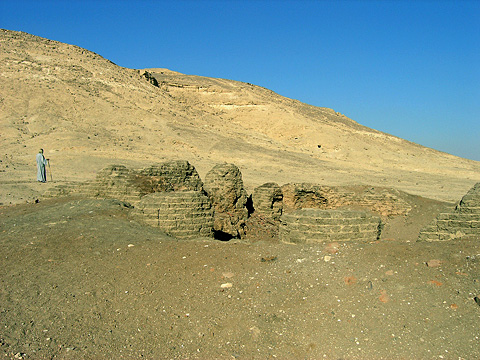Deir el-Gabrawi
Near the village of Deir el-Gabrawi, on the east bank of the Nile north of Asyut is a cemetery of over one hundred rock-cut tombs dating to the late Old Kingdom and First Intermediate Period. Once part of the 12th Upper Egyptian nome, the site contains the burials of powerful provincial governors of the region, whose local deity was Anti, a falcon-headed god of war.

The tombs are cut into the hillside in two main groups, on an upper and lower level and are linked by stone steps. Some of the high-status officials buried here controlled a large region stretching from Deir el-Gabrawi as far as Abydos, and held titles such as ‘Great Overlord of the Abydene Nome’. The most important tombs on the upper level belong to Ibi and Gawa, two high-ranking officials of the early Middle Kingdom and these may be open by request. Scenes within the tombs show the owners taking part in religious rites and agricultural and industrial activities. Reliefs from these tombs were stolen in the mid-1990s, but have now been returned and replaced in their original positions. Wall-scenes in the Old Kingdom tombs represent the owners overseeing crafts, agriculture, fishing and hunting.

Norman de Garis Davis completed recording work at Deir el-Gabrawi at the beginning of the 20th century for the publication of the tombs on behalf of the Egypt Exploration Fund for their ‘Archaeological Survey’, which was begun by Percy Newbury.
How to get there
Deir el-Gabrawi is on the eastern bank of the Nile opposite the town of Manfalut, to the north of Asyut. The tombs are cut into the cliffs on the edge of the desert.
